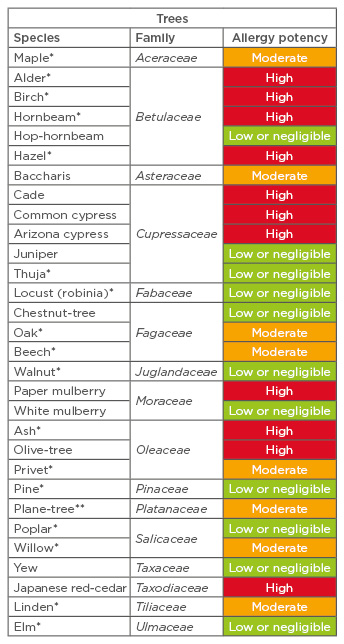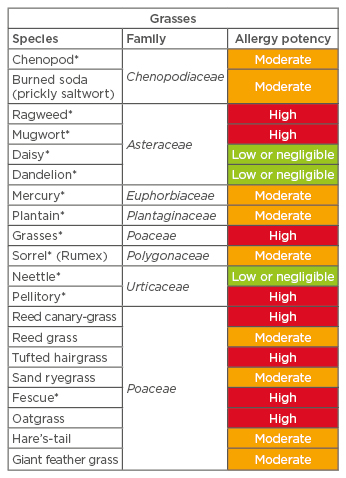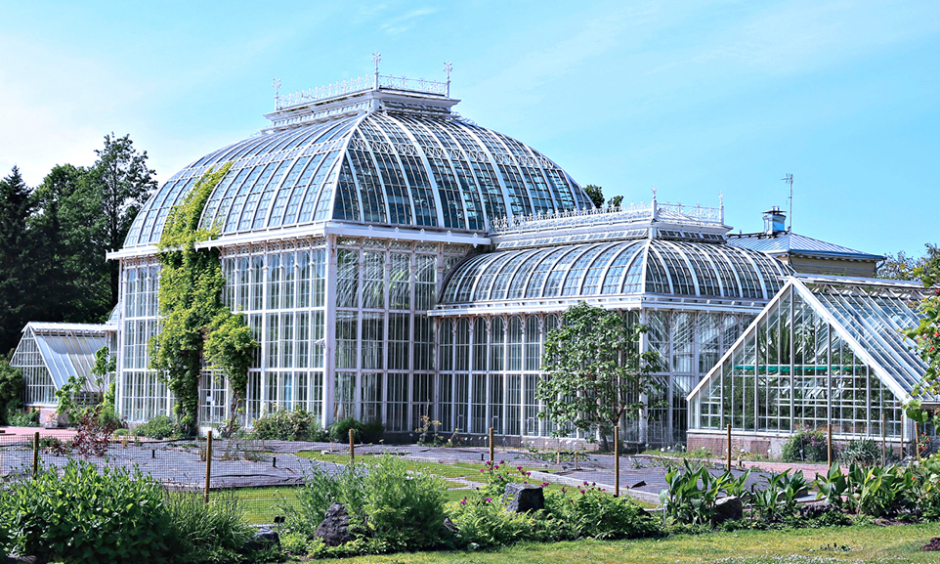Pollinosis, or respiratory allergy due to pollen grains, is a real pathology for 20–30% of the European population. Before illness prevails, there is a period of sensitisation due to pollen exposure of the population, particularly among children, the elderly, and the very frail. For this reason, it may be very important to decrease the risk of sensitisation by pollen in proximity of these people, such as in public gardens, schools, and hospitals.
It is necessary to truly understand the difference between the allergy potency of a pollen grain, and the allergy risk due to the pollen. The allergy potency is the capacity of the pollen grain to produce immunoglobulin E in a large part of the population. It is an exposure index corresponding to the level of allergen contained inside the pollen grain, in the micro-cytoplasmic particles or around the exine of the pollen grain. The allergy potency of a pollen grain is the same regardless of the localisation of the source plant. For instance, birch pollen is a pollen grain which contains a large amount of Bet v 1 in any country from Finland to the south of Spain. This also applies to other trees such as olive, cypress, grasses, and ragweed.
The allergy risk due to pollen is a health impact index corresponding to the capacity of the amount of pollen to cause allergy to sensitise an individual to a place. Allergy risk is dependent on the allergy potency of the pollen grain, the amount of pollen, the localisation of the population, and the meteorological conditions.
For our example, the allergy risk due to birch pollen exposure is very high in Finland and nul in the south of Spain.
For all these reasons, the French aerobiology network (RNSA) provided some tables with the allergy potency (high, moderate, low, or negligible) of the main trees, grasses, and herbs that are commonly planted in urban areas (Table 1, Table 2). It is very important that landscape gardeners take into account these lists before choosing the different species for public or private gardens for the health of the users.1,2

Table 1: Allergy potency for main trees.
*Several species; **The pollen of the plane trees is weakly allergenic. On the other hand, the microneedles contained in the waders resulting from the degradation of the female heads of the previous year are very irritating.

Table 2: Allergy potency for main grasses.
*Several species.
It is interesting to see that similar publications of exposure index in Granada, Spain estimated an exposure index for different public gardens with the number of plants and their respective allergy potency.3 On the same topic, during 2 years (2015– 2016) the aerobiological information systems and allergic respiratory disease management (AIS LIFE) and RNSA located some Sigma-2 like pollen traps in gardens in Paris and Lyon, France. These proximity pollen traps evaluate the allergy potency of different gardens and create an index of exposure risk with reference to the number of species, allergy potency, and the annual number of pollen grains of each.4,5
The recommendations are as follows: plants with low or negligible allergy potency can be freely planted, those with moderate potency should only be planted in very few numbers, and those with high potency should not be planted.








